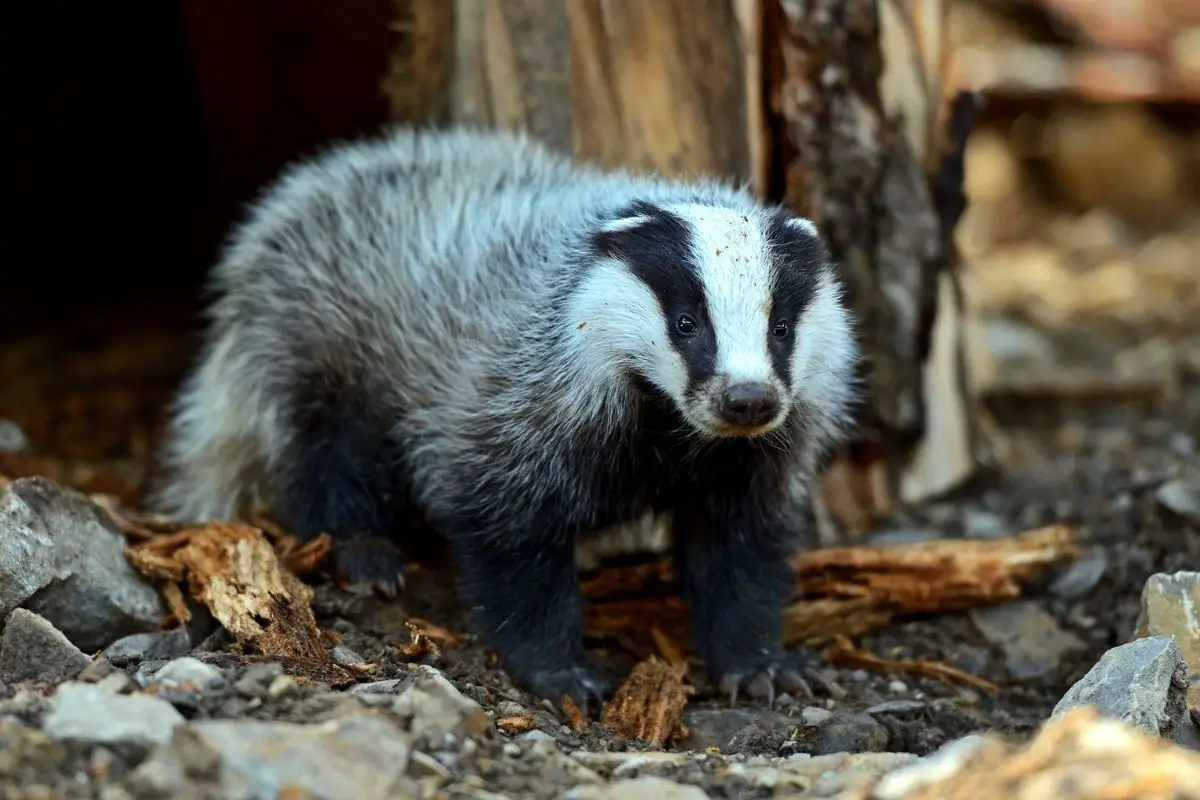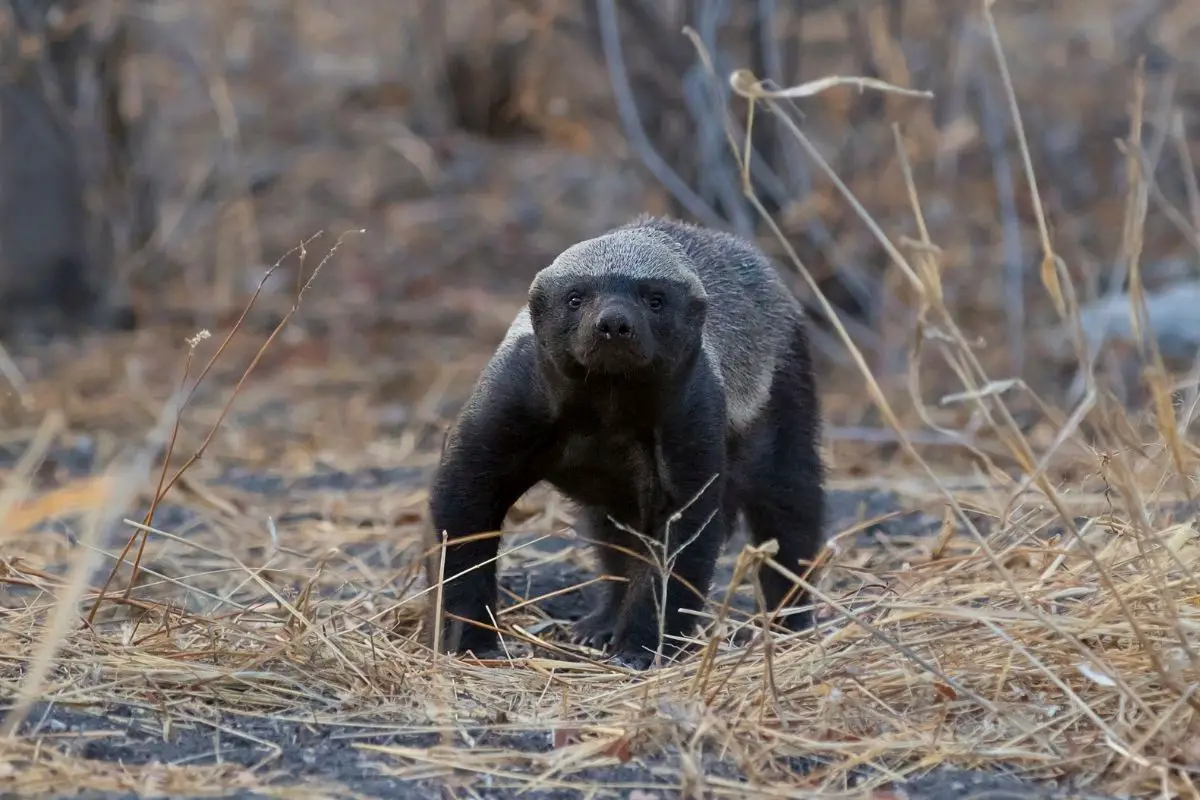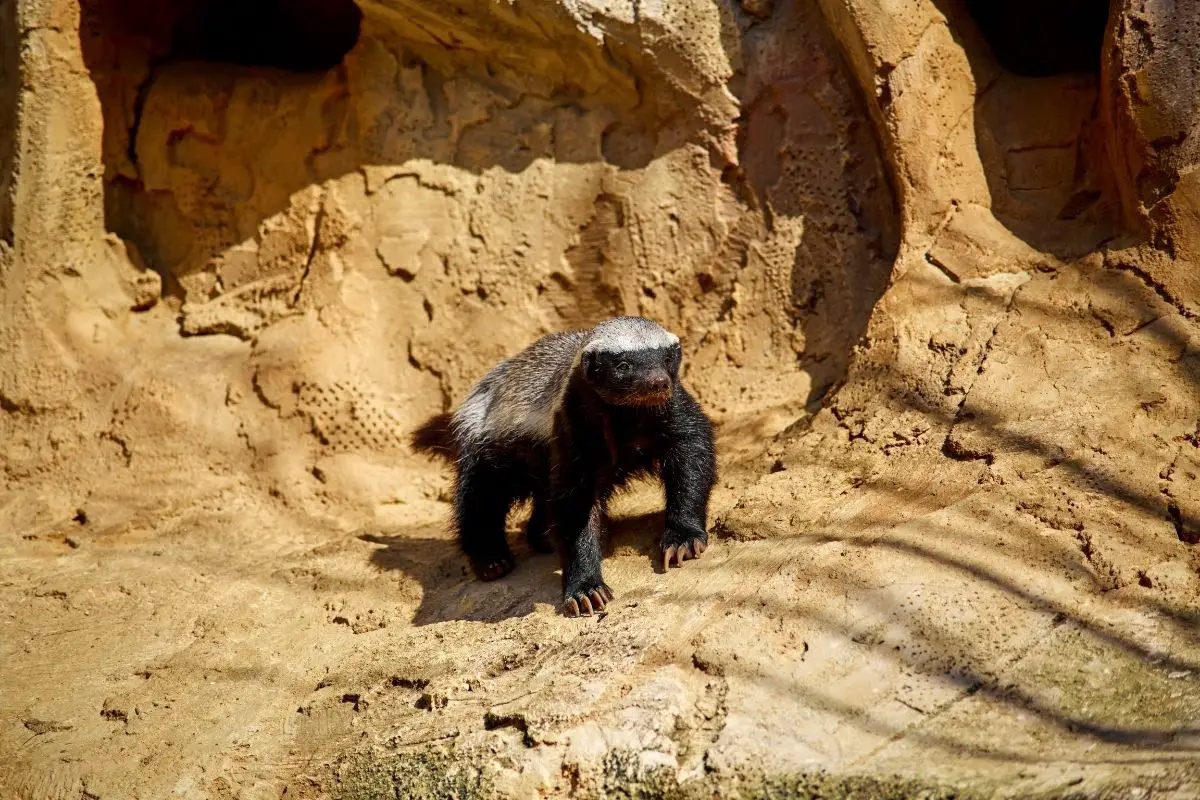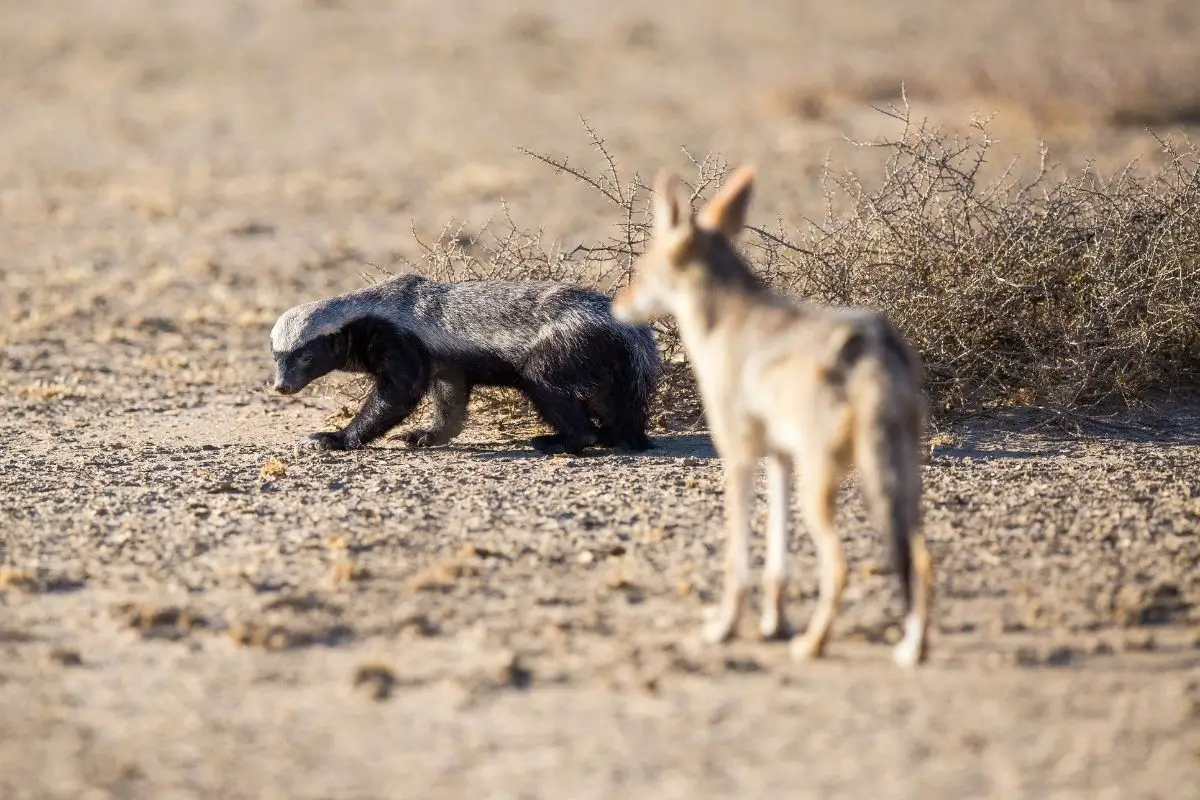
Wild honey badgers are fearless, nasty, and amazing. They are tenacious and formidable fighters, and ”yes” a honey badger can kill a lion. The Guinness Book of World Records named the honey badger as ”the most fearless animal in all the animal kingdom.”
That’s quite a feat for such a small creature. These little beasts are not only fearless when it comes to attacking lions, they also think nothing of going after bees, jackals, venomous snakes, elephants, cobras, and mongooses. Basically, they’ll attack any animal without a second thought for their own safety.
Learn more about a honey badger vs a lion in a battle, honey badger attack moves, and its natural defensive weapons.
A Body Built to Fight

Although honey badgers only weigh from 11 to 40 pounds and grow from 1.5 to 2.5 feet long, their super thick skin protects them from predators. They also have a strong, offensive odor that repels other animals. Honey badgers rely on their sharp, long claws and powerful teeth to battle enemies.
Their teeth and jaws are so forceful, that they can chew through tortoise shells. They don’t have the best vision, but they have a tremendous sense of smell and exceptional hearing. When chasing prey, honey badgers gallop about 20 mph.
They also use their claws for digging small prey out of burrows.
How Does a Honey Badger Overpower a Lion?

Size isn’t the only factor when a honey badger faces off with a lion. The lion might weigh 500 pounds compared to a 40-pound honey badger, but the relentless and fearless honey badger is a formidable opponent. Although a honey badger doesn’t always win a battle against a lion, if it can get a strategic grip with its powerful teeth and jaws, it evens the odds.
Here are some other defensive moves a honey badger displays against a lion:
Flexible and Tough Skin
Honey badger skin is thick and tough, as well as flexible. A lion’s fangs are 4 inches long and powerful. But, if they only latch on to the badger’s skin and not its bones, the badger can flip around in its flexible skin.
This gives the badger an advantage of surprise, and it can bite the lion’s vulnerable areas with its own forceful teeth. Since the badger can move around in its skin, it’s able to wriggle around, keeping its vital organs out of harm’s way. Using its twisting movements, the honey badger can twist and bite exposed areas of the lion, such as its belly, eyes, and testicles.
Its skin offers enhanced protection from knives, animal bites, and poisonous snake bites. However, it’s not enough to prevent a lion’s crushing jaws if it manages to grab the badger’s body.
Strong Jaws and Teeth
With their strong jaws and teeth, honey badgers can crush the bones of lions. If they’re able to latch on to a lion’s leg, they can incapacitate it while attacking more susceptible organs. Many times, honey badgers rig and tear with their claws and teeth, then wait for the lion to die from loss of blood.
Long, Sharp Claws
Honey badgers have long, thick claws that grow about 1.5 inches long. They use their incredibly powerful claws for digging tunnels in a matter of minutes, but they also come in handy for clawing predators during battle. They also have thick palms, which give them excellent balance and running power.
Their short, thick legs and well-balanced feet are useful for chasing prey.
Who Would Win? Honey Badger vs Lion
A fight between a honey badger and a lion could go either way. If the honey badger injures the lion first, it can tire out the lion with relentless attacks. Imagine the Chinese torture of ”death by 1,000 cuts,” and you can see how a honey badger could win against a lion.
Comparing the Honey Badger and the Lion

When you consider the sizes of the honey badger and the lion, you would naturally conclude that a lion could overpower its smaller foe every time. Let’s compare the qualities of each animal to see how they stack up against each other.
- Length of Honey Badger – 1.5 to 2.5 feet
- Length of Lion – 5.5 to 8 feet
- Tail Length of Honey Badger – up to 1 foot
- Tail Length of Lion – up to 3.5 feet
- Height of Honey Badger – about .75 feet
- Height of Lion – about 3.5 feet
- Honey Badger Bite Force – 50 PSI
- Lion Bite Force – 1,000 PSI
- Weight of Honey Badger – up to 40 pounds
- Weight of Lion – up to 550 pounds
After studying the physical comparisons between a honey badger and a lion, it seems incredible that a honey badger would win a fight with a lion. If you doubt the ferocity of the honey badger, this video might change your mind.
Does the Honey Badger Have Any Natural Predators?

Since honey badgers live in the grasslands of Africa and Asia, it seems that they would have many predators, such as lions, cheetahs, wild dogs, and hyenas. But, most animals are wary of attacking honey badgers because of their nasty, aggressive nature. Their survival depends on their fearless nature and their physical defenses.
If they are attacked by a larger predator, they’ll fight back or roll into a ball. Their tough skin and flexible movements protect them from most attacks. Also, if a honey badger is attacked near its family, the other badgers will join in the fight.
Although they can defend themselves against most animal predators, humans are another story. Beekeepers often trap and kill honey badgers. This is because honey badgers love honey and bee larvae.
They raid wild killer bee nests for honey, but they also raid beekeeper hives. Humans also hunt honey badgers for their skin, meat, and bone marrow.
Do Honey Badgers Look for Fights?

With such an aggressive nature, it suggests that honey badgers would look for fights with other animals. Despite their nasty reputation, honey badgers try to avoid fighting. If they sense a lion or other predator nearby, they seek shelter rather than confrontation.
They only attack when they’re cornered, surprised, or protecting family. Usually, honey badgers prefer hunting small animals like rodents and birds. They also kill puff adders, cobras, and other venomous snakes.
Assailants often startle honey badgers as they dig tunnels. When surprised, the badger releases its potent scent from its anal glands, gives a rattling roar, stands on its hind legs, and raises its fur on end. This is usually enough to scare away the enemy.
If not, the honey badger will not hesitate to attack.
Sources:



